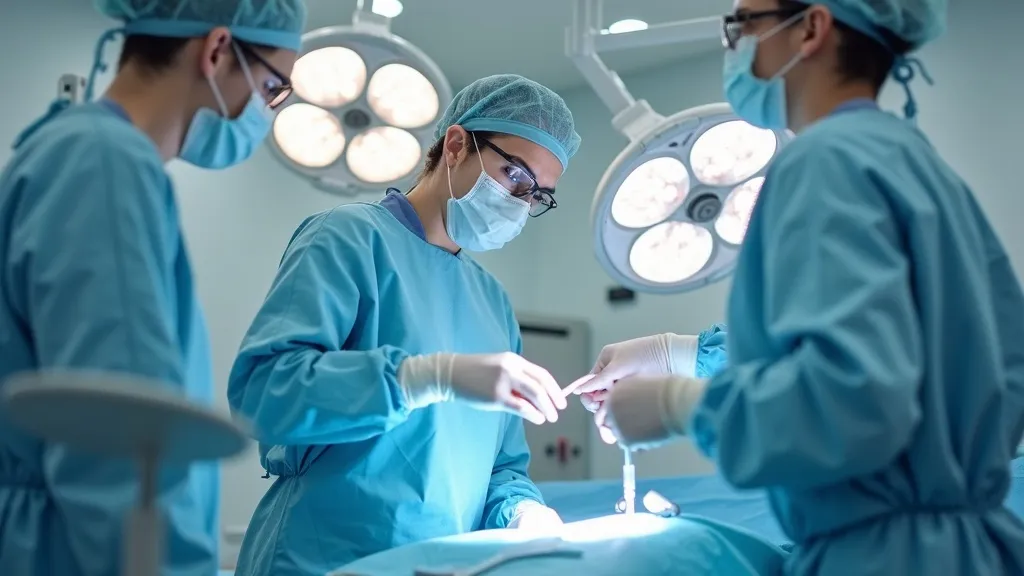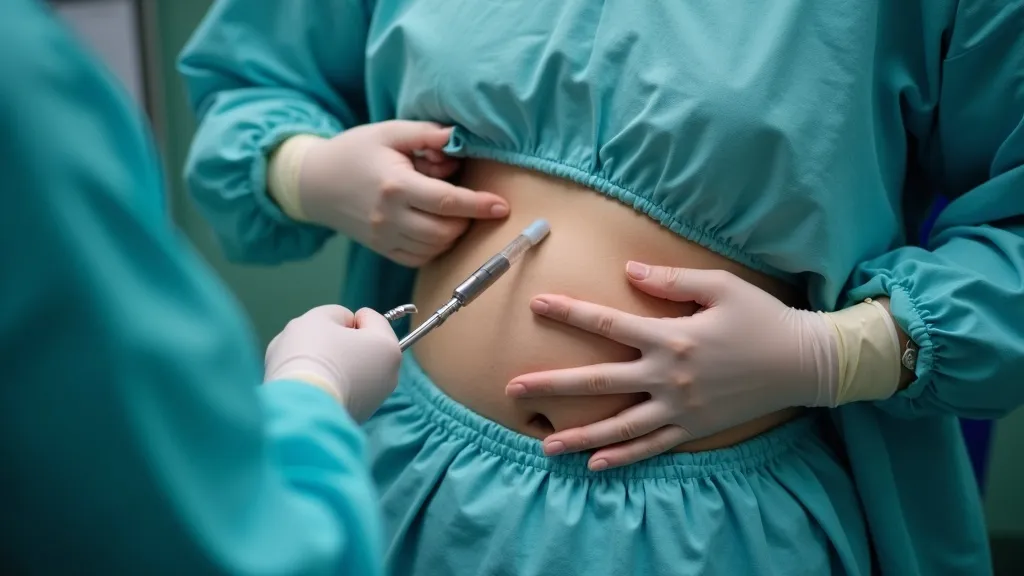Understanding Abdominoplasty and Liposuction
This comprehensive guide explores the intricacies of abdominoplasty and liposuction, two popular cosmetic procedures aimed at enhancing body contour. Abdominoplasty focuses on removing excess skin and tightening abdominal muscles, while liposuction targets fat removal from various body parts. Both procedures offer transformative results, though they differ in technique and recovery processes.

Understanding Abdominoplasty and Liposuction
Cosmetic surgeries like abdominoplasty and liposuction have gained popularity for their ability to enhance physical appearance by reshaping and contouring the body. These procedures, although often discussed together, serve different purposes and employ distinct techniques. Understanding their nuances is essential for anyone considering these surgical options. Both surgeries can significantly improve self-esteem and body image, but they cater to different needs and desired outcomes, making it crucial for prospective patients to educate themselves thoroughly before making a decision. This article delves deeper into what these procedures entail, their benefits, potential risks, and considerations for candidates.
What is Abdominoplasty?
Abdominoplasty, commonly referred to as a tummy tuck, is a surgical procedure designed to remove excess skin and fat from the abdominal area while tightening the underlying muscles. This operation is particularly beneficial for individuals who have experienced significant weight loss or pregnancy, resulting in stretched skin and weakened muscles. The procedure not only addresses cosmetic concerns but can also improve functional aspects of the abdominal wall.
The procedure involves an incision made from hip to hip, allowing the surgeon to remove excess skin and fat. The underlying muscles are then tightened to create a firmer abdominal profile. The results are a flatter and more toned midsection, boosting the patient's confidence and comfort in their appearance. Many patients also report improved posture and a reduction in back pain following the procedure, as the tightened muscles provide better support. Furthermore, abdominoplasty can sometimes include the repositioning of the navel, ensuring that it remains in a natural position post-surgery.
There are various techniques of abdominoplasty, including full abdominoplasty, mini-abdominoplasty, and extended abdominoplasty. A full abdominoplasty involves a complete correction of the abdominal area, while a mini-abdominoplasty targets only the lower abdomen and may involve a shorter incision. Extended abdominoplasty is often performed on patients who have lost a significant amount of weight and require additional skin removal around the sides of the torso.
Exploring Liposuction
Liposuction, on the other hand, focuses specifically on fat removal from targeted areas of the body, such as the abdomen, thighs, arms, and back. This procedure uses a suction technique to eliminate fat deposits that are resistant to diet and exercise, thereby enhancing body contour and proportion. It is important to note that liposuction is not a weight-loss procedure but a body contouring method.
Unlike abdominoplasty, liposuction does not involve the removal of skin or muscle tightening. It is a versatile procedure that can be customized to address specific problem areas, offering a more sculpted look without the need for larger incisions. The technique has evolved significantly over the years, with advancements such as tumescent liposuction, ultrasound-assisted liposuction (UAL), and laser-assisted liposuction (LAL) allowing for more precise fat removal with less trauma to surrounding tissues. Each method has its own advantages and is chosen based on the patient's needs and the surgeon's expertise.
Liposuction can be performed on various parts of the body, including the abdomen, thighs, hips, buttocks, arms, neck, and even the ankles. The procedure is often sought by individuals looking to refine their physique and achieve a more balanced body shape. Additionally, liposuction can be combined with other procedures, such as a tummy tuck, for more comprehensive results.
Comparing the Procedures
| Aspect | Abdominoplasty | Liposuction |
|---|---|---|
| Purpose | Removes excess skin and tightens muscles | Removes targeted fat deposits |
| Incision | Large incision from hip to hip | Small, discreet incisions |
| Recovery Time | 4-6 weeks | 1-2 weeks |
| Scarring | Visible scar along incision line | Minimal scarring |
| Ideal Candidates | Individuals with excess skin/muscle laxity | Individuals with stubborn fat deposits |
Procedure and Recovery
Both abdominoplasty and liposuction require careful planning and consultation with a qualified plastic surgeon to determine the top approach for each individual case. The procedures are typically performed under general anesthesia, ensuring patient comfort throughout the surgery. Pre-operative assessments, including medical history evaluations and physical examinations, are crucial to identify any underlying health issues that may affect surgery and recovery.
Recovery times vary significantly between the two procedures. Abdominoplasty involves a more extensive healing process due to the muscle repair and larger incision. Patients may need up to six weeks for a full recovery. During the initial weeks, patients are advised to avoid strenuous activities and heavy lifting to allow proper healing. Pain management, as well as wearing compression garments, can help reduce swelling and support the surgical site during recovery.
Liposuction, however, generally allows for a quicker recovery, with many individuals returning to normal activities within two weeks. Although less invasive than abdominoplasty, liposuction still requires patients to follow post-operative care instructions diligently to minimize complications. This may include wearing compression garments and attending follow-up appointments to monitor healing.
Both procedures can result in noticeable changes in body contour and self-esteem, but it is essential to have realistic expectations. Surgeons often emphasize that while these surgeries can significantly enhance appearance, they are not substitutes for a healthy lifestyle. Maintaining a balanced diet and regular exercise post-surgery is vital to sustaining results.
FAQs
- Is it possible to combine abdominoplasty and liposuction?
Yes, these procedures can be combined to achieve comprehensive body contouring results. This approach is often referred to as a 'mommy makeover', which typically includes a tummy tuck and breast surgery, addressing multiple areas affected by pregnancy and weight changes. - What are the risks associated with these procedures?
As with any surgery, there are risks including infection, bleeding, and adverse reactions to anesthesia. It's crucial to discuss these with your surgeon. Other potential risks include seroma (fluid accumulation), poor wound healing, and changes in sensation in the surgical area. - How long do the results last?
Results can be long-lasting, especially if a healthy lifestyle is maintained. However, significant weight fluctuations or pregnancy can alter the results. Weight management is crucial for preserving the benefits of both procedures, as gaining weight can lead to the return of excess skin or fat deposits. - Am I a good candidate for these procedures?
Candidates for abdominoplasty and liposuction should be in good overall health, non-smokers, and have realistic expectations about the outcomes. It’s essential to discuss personal health history and goals with a plastic surgeon to determine suitability for these surgeries. - Can I undergo these procedures if I plan to have children in the future?
It is generally advised to postpone abdominoplasty if you plan to become pregnant, as pregnancy can stretch the abdominal muscles and skin again. Liposuction may be performed, but future weight changes can affect the results.
Conclusion
In conclusion, both abdominoplasty and liposuction offer significant cosmetic benefits, but it's essential to understand their differences and consider personal goals and health conditions when deciding on a procedure. Consulting with a board-certified plastic surgeon can help ensure a safe and satisfactory outcome, aligning the surgical approach with the patient's unique needs and expectations. Both procedures require a commitment to post-operative care and lifestyle changes to maintain results, ensuring that the investment in one's appearance also translates to improved health and well-being.
In addition to the physical changes these surgeries can bring, many patients report psychological benefits such as increased self-confidence, improved body image, and a greater willingness to engage in social activities that they may have previously avoided due to body insecurities. It is important for individuals to consider not just the aesthetic outcomes but also the holistic impact of these surgeries on their lives.
As the popularity of body contouring procedures continues to grow, ongoing advancements in surgical techniques and technologies are making these options safer and more effective. Patients are encouraged to conduct thorough research, attend consultations, and ask questions to ensure they are fully informed about the processes involved. This proactive approach will help them make the best decision for their body and health, paving the way for a successful transformation.








